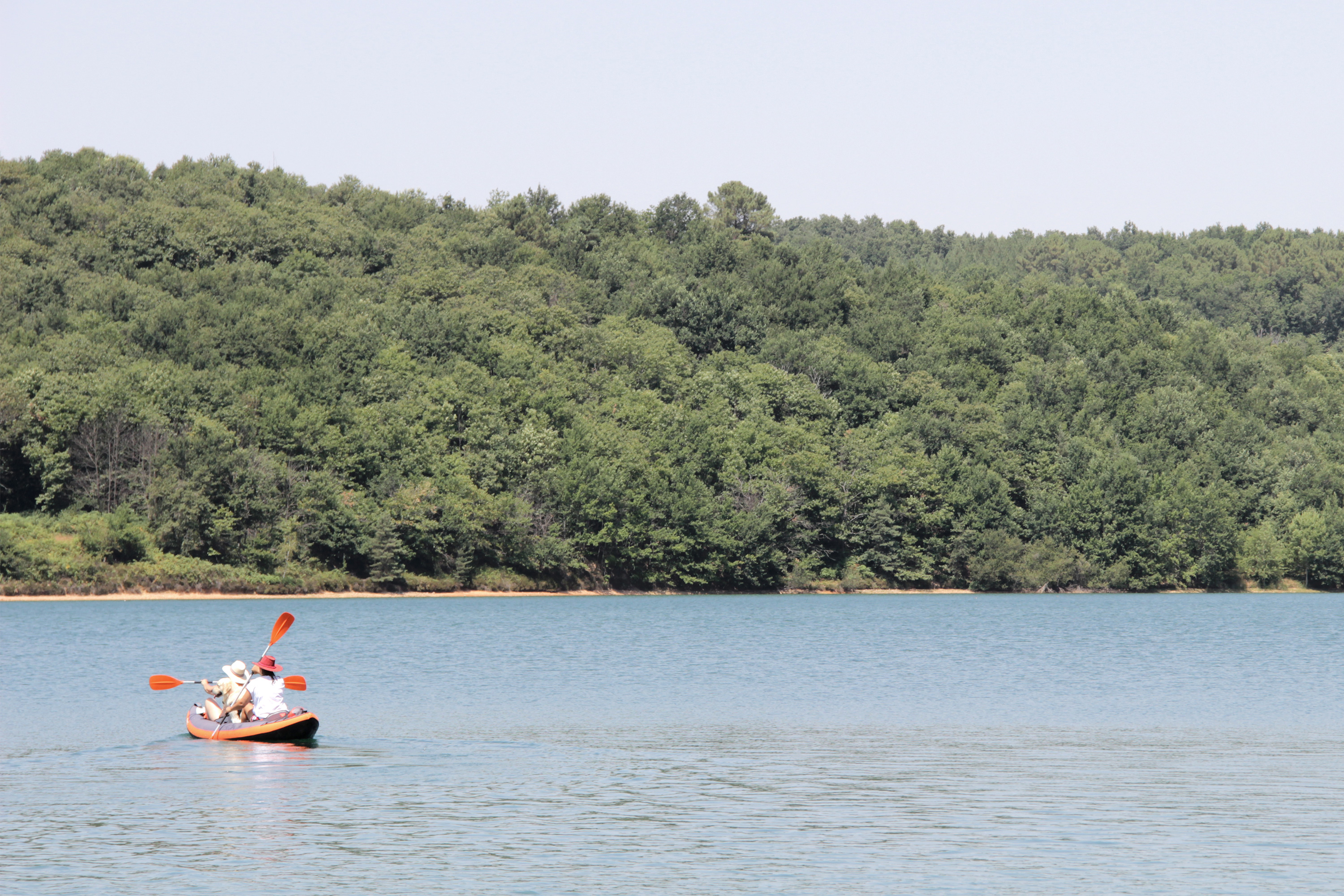bancalié
landscape study
with Paul Garcias
Eaucéa / CD Tarn, Albi
2019-2020
Eaucéa / CD Tarn, Albi
2019-2020
The Bancalié reservoir is an 86-hectare artificial lake created by a dam in 1974 between Albi and Castres in the Tarn department. So far, it has been mainly used for low-water level management, and as a strategic stock for potable water production. With increased uncertainty about water replenishment in the area due to rising temperatures, the Tarn department council considered a major reorganization of its water management scheme, exploring different scenarios and new use cases for the retaining reservoir - led by the engineering and consultancy firm Eaucéa, which is specialized in water management and environmental studies. As a part of this study, we were asked to analyze and evaluate how to enhance the touristic function of the lake at a departmental and regional scale, and how the different scenarios would impact its landscape and touristic development.
The reservoir is a popular place in the area for leisure and outdoor activities. Throughout the year runners, cyclists, hikers, fishermen and families appreciate the body of water and its buccolic setting, especially in the summer when temperatures reach record highs. However, the lack of infrastructures and equipments lead many cars and people to access the banks in an uncontrolled manner, spreading all around the lake and therefore endangering the long-term survival of its fragile local ecosystem, from water pollution to loitering.
Our report seeked to propose a global approach for land use planning and infrastructure development that would highlight the existing qualities of the Bancalié reservoir, improving its users experience while reducing their environmental impact, and simplifying its management by local actors. The first part of the report is a thorough diagnosis of the existing tourism practices at the regional scale, as well as the recreative practices and habits of the reservoir users, completed by a more sensitive approach which unveils the remarkable aspects of the landscape and its surroundings. While considering the different scenarios and use cases, as well as the high variation of water levels - sometimes up to 10 meters, the second part develops strategies and accomodation propositions that would reinforce the water body attractivity and the protection of its ecosystem, ranging from the transformation of existing parking spots to the creation of new pavilions and equipments.
The reservoir is a popular place in the area for leisure and outdoor activities. Throughout the year runners, cyclists, hikers, fishermen and families appreciate the body of water and its buccolic setting, especially in the summer when temperatures reach record highs. However, the lack of infrastructures and equipments lead many cars and people to access the banks in an uncontrolled manner, spreading all around the lake and therefore endangering the long-term survival of its fragile local ecosystem, from water pollution to loitering.
Our report seeked to propose a global approach for land use planning and infrastructure development that would highlight the existing qualities of the Bancalié reservoir, improving its users experience while reducing their environmental impact, and simplifying its management by local actors. The first part of the report is a thorough diagnosis of the existing tourism practices at the regional scale, as well as the recreative practices and habits of the reservoir users, completed by a more sensitive approach which unveils the remarkable aspects of the landscape and its surroundings. While considering the different scenarios and use cases, as well as the high variation of water levels - sometimes up to 10 meters, the second part develops strategies and accomodation propositions that would reinforce the water body attractivity and the protection of its ecosystem, ranging from the transformation of existing parking spots to the creation of new pavilions and equipments.













